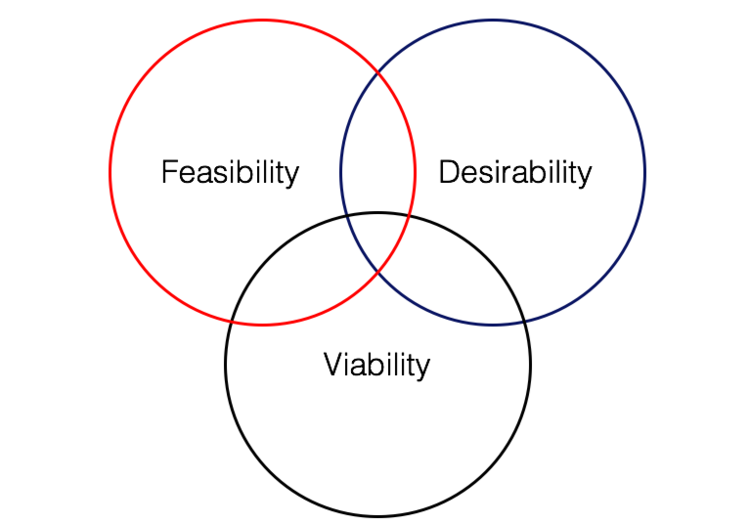Mar 2022
Digital transformation: keep the stakeholders close, but the end users closer
Digital transformation projects have helped whole industries adapt, and survive, in today’s competitive market, but the success of these ambitious projects should not be taken for granted. In fact, 70% of all transformation projects fall short of their objectives.

John Airey
Head of Advisory Services
While the technological part of any digital transformation is important, the people using that tech are crucial – without their knowledge, help and buy-in, you could be spending money and time on something that could prove detrimental to your business.
The focus of digital transformation
Digital transformation is the fundamental business change – from culture to operation – through the use of technology, aiming to increase customer value.
Only through incorporating and aligning the needs of people, processes and even the organisation’s capacity for change can digital transformation be successful, balanced and valuable.
The role of people in digital transformation
Digital transformation involves changing the behaviour of people, which is inherently difficult. Without interacting with those on-the-ground, it is almost impossible to understand their challenges and requirements.
Let’s look at an example - imagine a construction company called Arlton. The management team believes that the scheduling process is hindering the company’s operational efficiency, so they begin looking for a new system.
What they have is outdated and they can’t find an alternative that meets the management team’s requirements, so they find someone to build a new system for them which will improve operational efficiency and add customer value.
After considering budget and the management team’s understanding of business needs and requirements, the consultancy developed and implemented system X, but after some time passes, it becomes clear that Arlton has become less operationally efficient.
The end users don’t like using system X and, despite some added functionality to help manage customers, they can’t capture all the information they would have in the old system. This then begins to impact other teams; efficiency decreases, and interdepartmental friction increases.
In short, the new system is not fulfilling the end user’s needs; how did this happen? Because the project was based on a mere assumption by the management team.
The value centred approach: Feasibility, viability and desirability
To avoid this, three things should always be considered to ensure that value is always at the centre of any project are:
Feasibility: Can it be done? Is the technology solution within reach?
Viability: Does this align with the business objectives and budget?
Desirability: Does this solution satisfy a need? Is it usable and will it be used?
How much focus is spent on each component of the value centred model depends on the project in question, but they should all be given some consideration. Right at the centre of all three components is what has been coined ’the innovation sweet spot’.

How does this fit in with Arlton’s project?
System X was within budget, it was in line with the business objective, and it fulfilled the functional requirements according to the management team. On paper, it was a solid choice.
When looking at the value-centred approach, the Arlton project focused too heavily on viability and feasibility, with little to no consideration for desirability.
User research is evidence-based research
When considering a new product or service, the focus should always be on the right people, generally the end users (the people who uses the product or service).
User research aims to understand the challenges and thoughts of the end user and test assumptions, providing the evidence needed to make informed decisions.
Involving end users from the start means user needs helps define the project scope, meaning the ultimate solution will fit actual needs and desires rather than assumed ones – potentially avoiding costly mistakes, changes or even abandonment.
Solution mode
Once the challenges of the people on-the-ground have been identified and defined, only then should ’solution mode’ begin, with prototypes or mock-ups tested with them to validate designs and ideas.
Continuous refinement throughout the project will produce a more robust solution and reduce the level of unknowns when it comes to the final delivery.
User research does not replace or minimise the value of other stakeholder involvement but simply complements it, and while the level of recommended end user engagement varies depending on specific circumstances, it should always exist; a small amount of user research is better than none.
How could ’keeping the user close’ help mitigate some issues experienced by Arlton?
Even a small amount of user research at the start of the project may have identified that the assumed challenges, such as the lack of ability to effectively manage customers, weren’t actually priorities.
Keeping end users close throughout the project and testing prototypes could have picked up on the fact that they didn’t enjoy using system X or highlighted some important functionality which was missed. The digital transformation project could have had a completely different outcome: a data-driven one.
The moral of the story? If you veer away from or ignore the value of user insight in digital transformation projects, there is a higher chance of the deliverable not meeting expectations or needs.
It might feel like unnecessary time spent when you believe you know what the problem is, but user insight will increase the rate of success of the project. And, by having close interaction with the end users throughout, there’s less chance of having to re-do a whole lot of work, saving time and money in the long run.
If you want to learn more about how human-centred approaches can be used to solve business problems, then please contact us. We are very happy to help.
Find out more about our business consulting services here, or get in touch by emailing info@waterstons.com